If you’re in the market for a big-bore supernaked, you’re spoilt for choice. You have twins, triples and fours from Japanese and European manufacturers, and no one makes a bad one.
It was BMW who made all of its rivals sit up and take notice eight years ago when it released the original S 1000 R. It had a very, very good superbike in the S 1000 RR – itself a game changer at the time – so when BMW turned it into a comfortable and usable roadbike for the 2014 model year, it raised the bar in terms of not just the technology we came to expect from the genre, but at $18,990 at the time, also the sort of money we should be paying for really high-tech kit.
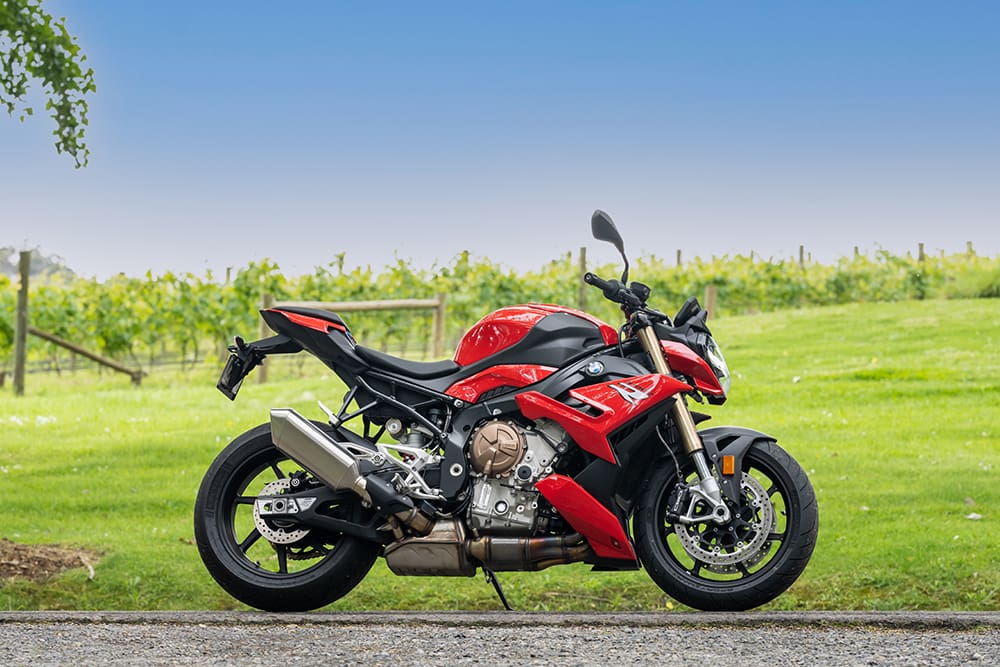
Fast forward to 2022 and the latest S 1000 R is still very competitive on both of those fronts. In terms of electronics, it’s got all of the bells and whistles, right down to beaming your braking force and cornering lean angle back at you via the 6.5-inch full-colour dash. And the price is very hard to argue with, too. The base model is priced at $22,695 on the road. Compare that to a base-model Aprilia Tuono ($28,230), Ducati Streetfighter V4 ($31,700) or even Yamaha’s MT-10 ($23,649) and it’s a very attractive proposition.
The version I’m riding is the S 1000 R Race, one of four versions of the S 1000 R offered to the Aussie market. After the base model – which is already well equipped with switchable riding modes, ABS Pro, Dynamic Traction Control, Race ABS and Hill Start Control – there’s the Sport, Race and top-spec M-Sport versions making up the four-tiered range.

The extra $7500 or so you’ll need to front up for the Race version buys you heaps of extra gear. There’s an adaptive headlight, a daytime running lamp, Headlight Pro, tyre-pressure monitoring, an M Endurance chain (which is said to never need lubing or adjusting), a lightweight lithium battery, forged wheels (complete with flash M logos) and a sports silencer.
On top of that, the Race also comes fitted with two available packages. There’s the Comfort package (USB charging socket, heated grips and cruise control), as well as the Dynamic package (Gear Shift Assist Pro, Dynamic Damping Control, Riding Modes Pro and an engine spoiler). Even with all of those extra goodies, it’s still in the ballpark of the base-model prices of its European big-bore naked rivals.
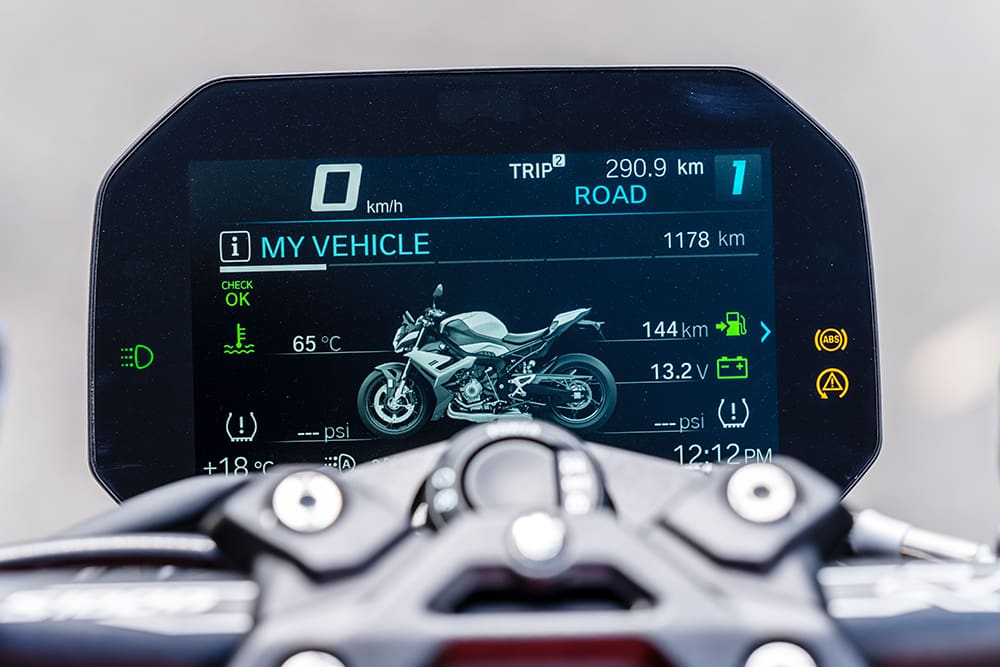 BMW hasn’t bothered fitting the current fully-faired superbike’s ShiftCam engine to the latest nakedbike, which means the performance of this one is more or less unchanged compared the last update in 2017. In real world terms, this doesn’t matter a jot – the 2022 S 1000 R’s 121kW (164hp) is more than enough power for 99 percent of road riders, especially given how and where the inline-four makes its power. But in a really crowded nakedbike market where numbers like 208hp (Ducati Streetfighter V4) and 177hp (Triumph Speed Triple RS) are wooing would-be owners into their corner, you need to wonder whether at least a detuned version of the RR’s 205hp ShiftCam engine could have made better marketing sense.
BMW hasn’t bothered fitting the current fully-faired superbike’s ShiftCam engine to the latest nakedbike, which means the performance of this one is more or less unchanged compared the last update in 2017. In real world terms, this doesn’t matter a jot – the 2022 S 1000 R’s 121kW (164hp) is more than enough power for 99 percent of road riders, especially given how and where the inline-four makes its power. But in a really crowded nakedbike market where numbers like 208hp (Ducati Streetfighter V4) and 177hp (Triumph Speed Triple RS) are wooing would-be owners into their corner, you need to wonder whether at least a detuned version of the RR’s 205hp ShiftCam engine could have made better marketing sense.
Yes, the newer engine would have added up to a significantly higher price. But if every buying decision in this category was made by weighing up price and capability, then everyone would buy a GSX-S1000 – in my mind, it’s one of the best value-for-money supernakeds going.
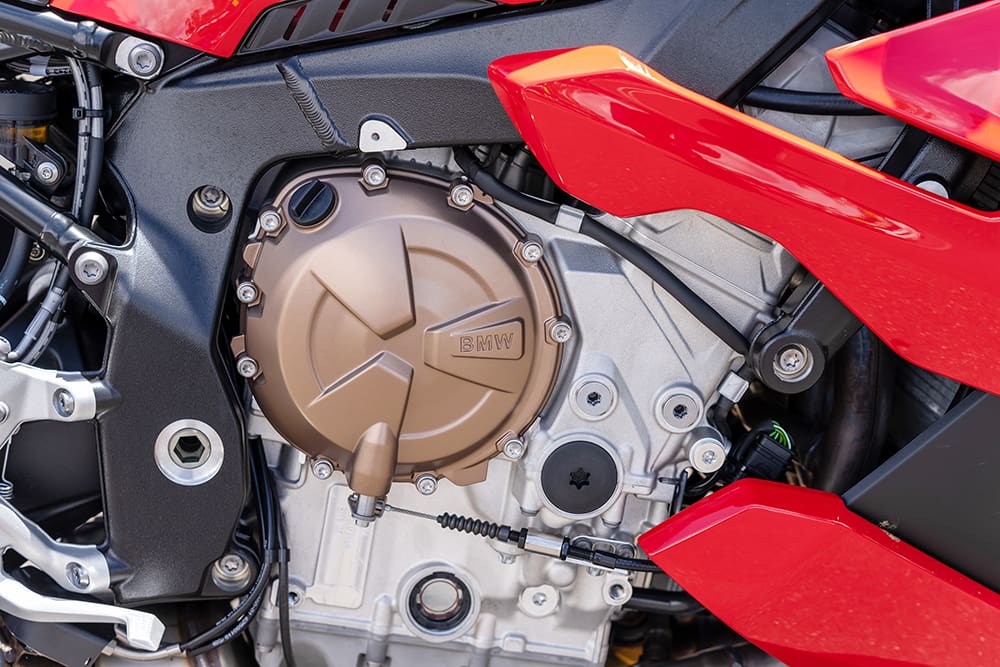
Which brings me to another important point. You see, the big hitters in this segment all have at least one trait that reaches inside your chest and grabs at your heart. The KTM has that wild 1301cc V-Twin, the Aprilia knocks your socks off with its exhaust note and sheer usability while the Ducati’s ridiculous power-to-weight ratio needs to be felt to be believed.
And while the BMW S 1000 R is as capable and as intelligent as anything else it’s competing against, it doesn’t have that same extroverted personality that’s so good at luring hard-earned cash from people’s pockets. Don’t get me wrong, the S 1000 R is a terrific motorbike and so easy to ride fast – I think only the Aprilia bests it in terms of how quickly it can make you feel like a hero. I spent a week on an early-model S 1000 R in Tasmania six or seven years ago and I fell head over heels in love with it. But the S 1000 R six or seven years ago was a game changer. And while it has been improved over the years with more sophisticated electronics, modest performance updates and considerable weight savings, I reckon the market segment has shifted a step further again, and that leaves the BMW ever so slightly in its shadow. Though, if the truth be known, it’s because I did fall so hard for that first S 1000 R (Tasmania will do that to you) that I’m being critical on this one.

Because as well as its competitive price and high level of tech, there’s plenty of great things about the current-model S 1000 R Race. Not least the amount of usable torque from the inline-four cylinder engine which is part of the reason why this thing feels so rapid. Sure, its peak torque is a good deal shy of its lesser-cylindered rivals, as you’d expect, but BMW says there’s 80Nm on tap by just 3000rpm. This increases to 90Nm just 2500rpm later and peaks at 114Nm by 9250rpm.
Nakedbike purists won’t love that there’s so much bodywork, but I think it adds to the aggressive look of the S 1000 R and complements the exposed trellising of the subframe beautifully.
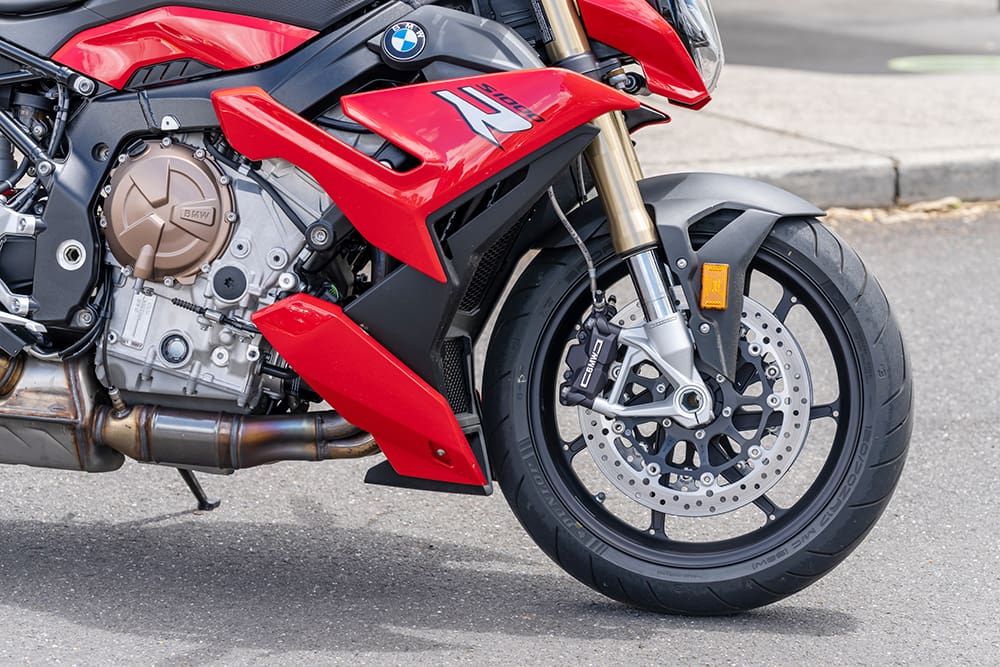
In terms of changes and updates over the old model, this newest version gets BMW’s latest (and very excellent) 6.4-inch full-colour dash which is actuated by the firm’s multi-controller wheel on the inside of the left-hand grip. The wheel can take a little bit of getting used to if you’re not familiar with it, but it won’t be long before it all feels pretty natural.
There’s more information to be found within the dash than you’ll probably ever need and this is where you can adjust your level of electronic intervention, check your tyre pressures, see how much lean angle you reached on your morning commute and, once you’ve downloaded the app, access your phone, music playlist and even turn the dash into turn-by-turn navigation system. It really is as good as modern-day dashes get.
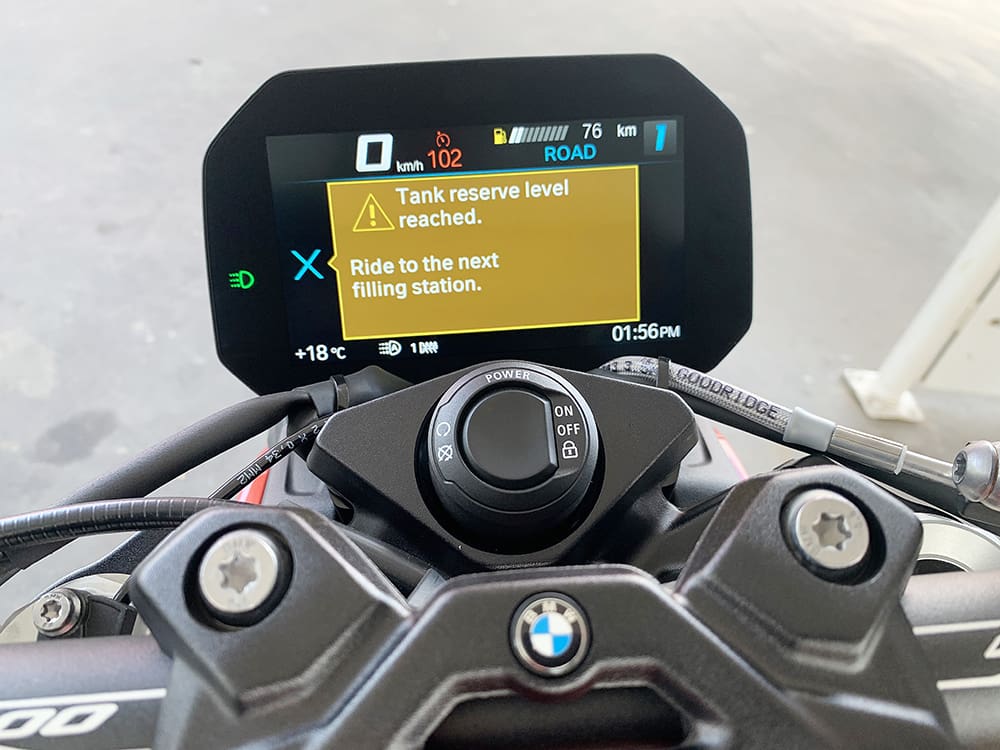
The engine’s more compact, there’s been some fat taken from the chassis and the wheels and exhaust are both lighter than the predecessor’s which will have a lot to do with what BMW is calling ‘optimised acceleration’ for the new bike. And despite that unchanged power figure, the engine does feel really potent, especially when you’ve flicked it over into Dynamic mode.
The switchable modes are Rain, Road and Dynamic with an optional fourth mode called Dynamic Pro (as part of the Riding Modes Pro option) which, as well as giving you more adjustability within the functions, adds launch control, a pitlane speed limiter and Hillstart Control Pro to the already long list of rider aids. Switching between the modes will not only adjust the power and level of electronic intervention, but will also adjust the DDC, or Dynamic Damping Control, which stiffens or softens the suspension based on the mode you’ve chosen.
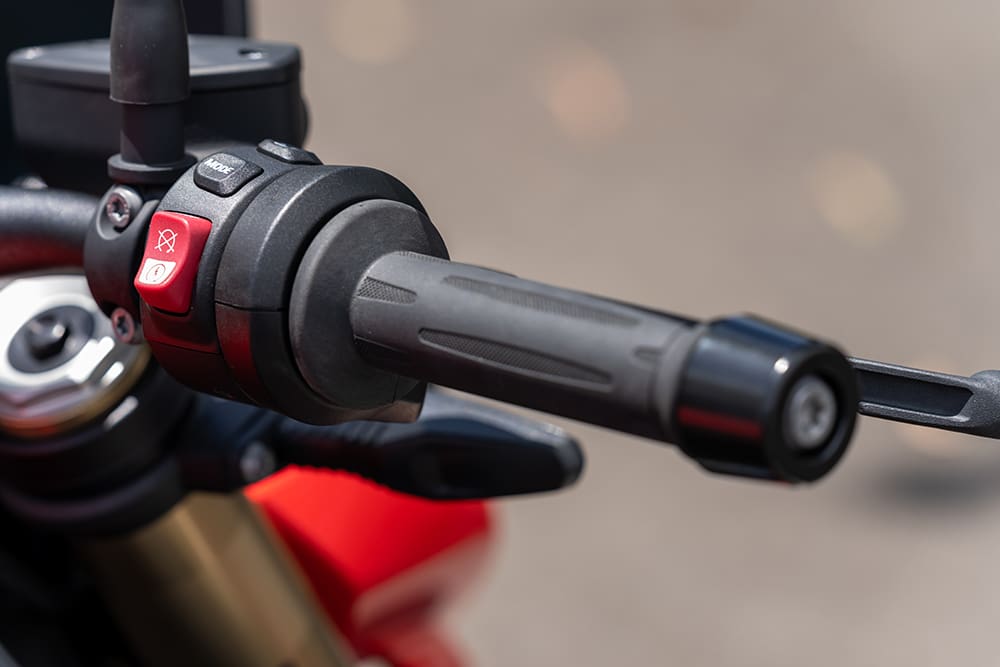
On top of this, there’s a separate button on the left-hand switchblock which allows you to switch between Road or Dynamic damping regardless of what mode you’re in. At 64kg, I found Dynamic mode way too harsh – even when I was having a good go – Road mode is noticeably softer but still firm, and there’s a heap of great feedback through the front-end, which is part of the reason why this bike is easy to ride fast.
Those lighter forged wheels mean changing direction using the really wide handlebar is effortless and there are few better feelings in life than stringing together a series of bends in the sunshine to the melody of an upright and comfortable 999cc BMW inline-four. In terms of nakedbike ergonomics, the BMW is on the crouched end of the upright spectrum, but it adds to the level of engagement rather than taking anything away from the experience – and, importantly, it’s still all-day comfortable. Though if a bit of weight on your nakedbike-riding shoulders isn’t your bag, there are 10mm handlebar riser mounts offered as an option.

The seat height is a considerable 17mm higher than the outgoing model at 830mm, which no doubt adds to the crouched ergonomics, but it’s also narrower, which BMW says negates any noticeable difference in terms of getting your feet on the ground. It raises the centre of gravity slightly, but nothing too noticeable.
While they’re not the top-shelf and brand-named calipers found on many of its rivals, the BMW-branded brake calipers fed by braided steel lines (which are taken from the R nineT’s parts bin) are well and truly up to the task of washing off speed in a really timely and predictable manner. They’re not Superbike powerful like many of the BMW’s supernaked rivals, but they don’t need to be, and there’s loads of power and feel.
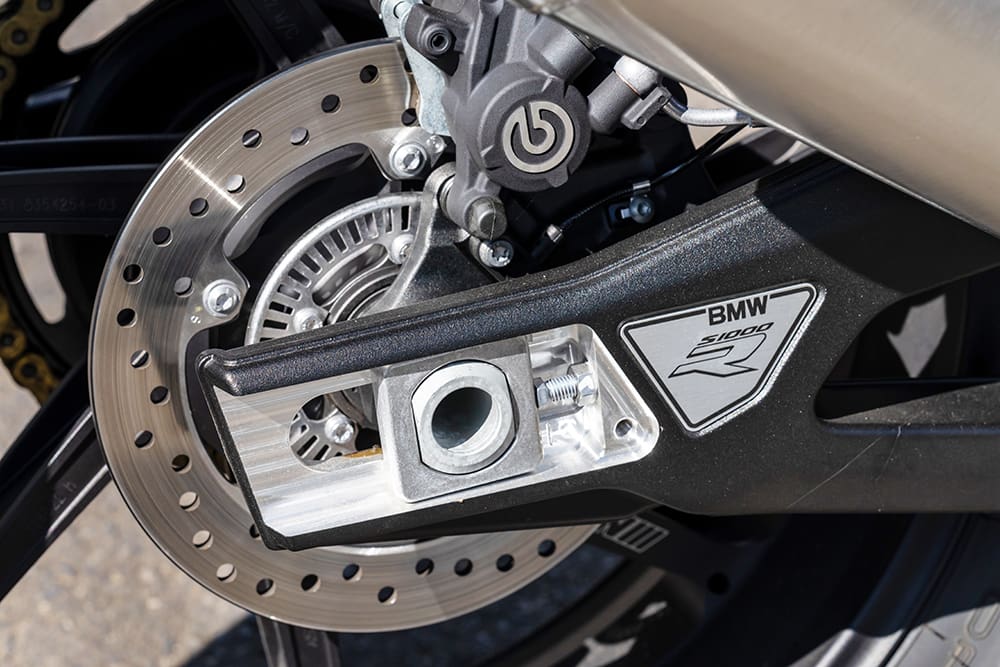
Hard, emergency-type braking will bring on the indicators – speaking of the indicators, the small, rear stem-type indicators also play the roles of the tail and brake lights. Good in theory, but I did always have one eye on the mirrors when I was slowing to turn off a busy road, because that’s a lot of function asked of a two-inch-long LED.
The quickshifter is excellent, as we’ve come to expect from BMW, and the latest S 1000 R has drag torque control for the first time, which to you and me does the same job as a slipper clutch, but uses electronics to prevent the rear from slipping when downshifting from high revs.
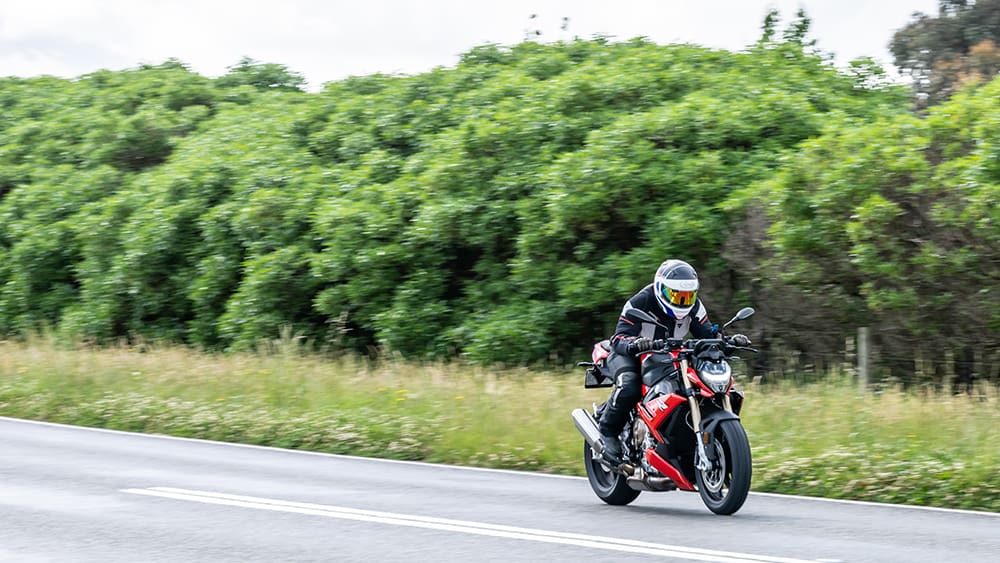
During the 600km I ended up covering on the S 1000 R , I returned an average fuel consumption of just over 5.5L/100km from the 16.5L tank. That means you’re looking at around 250-odd kays before you’re looking for a servo. But don’t worry – you won’t miss the fuel light. It takes the form of a large orange box covering the entire dash politely telling you to “ride to the next filling station.”
One of the many strategies used in order to meet Euro 5 regulations, which this new model does, is the top three gears have taller ratios. Not only does this help reduce engine speed and therefore fuel consumption, it helps pass the stricter noise tests, too. But it still sounds great. Not quite as great as the inline-four powering Suzuki’s latest GSX-S1000, but it certainly doesn’t sound like it’s suffered the stifles of Euro 5 compatibility.
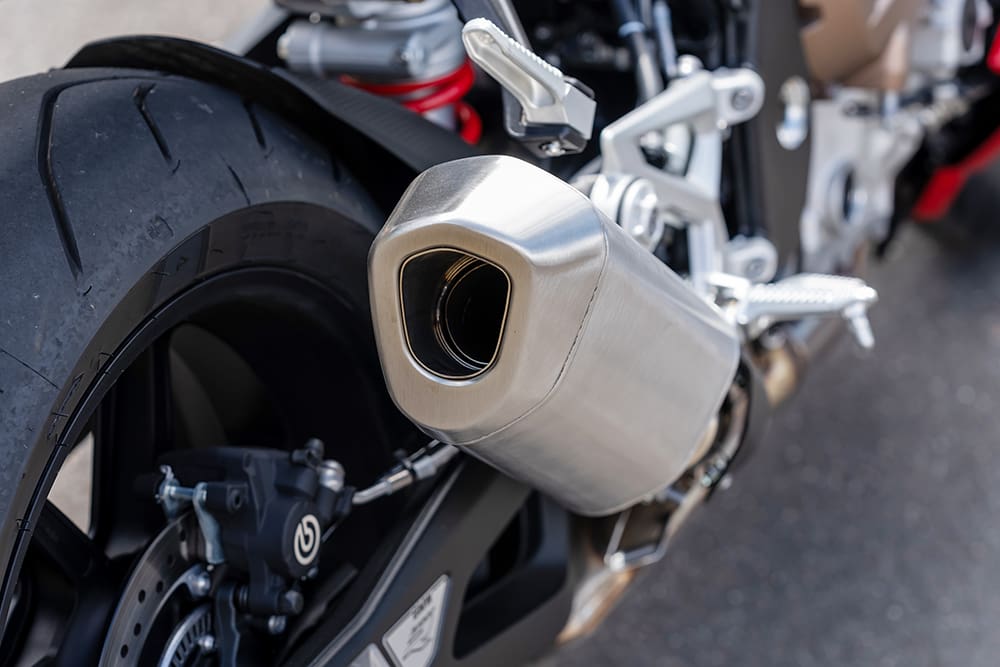
Now I’ve said all of that, of course there’s absolutely nothing wrong with what is an extremely intelligent and capable 999cc supernaked. So it’s not as rowdy as some of its rivals, but the exclusivity of that Bavarian badge probably makes it the best dressed of the bunch.
And whatever it might lack against its more extroverted contemporaries, it certainly makes up for in price.

Test Kel Buckley Photography Mark Dadswell











